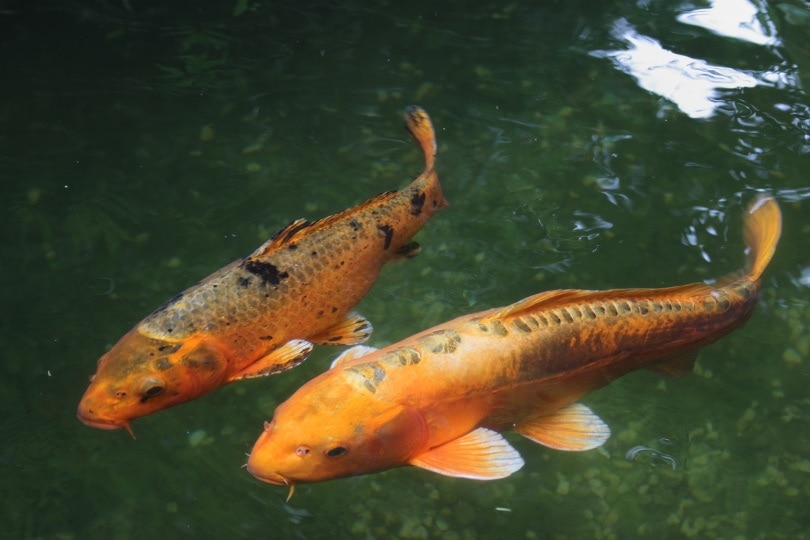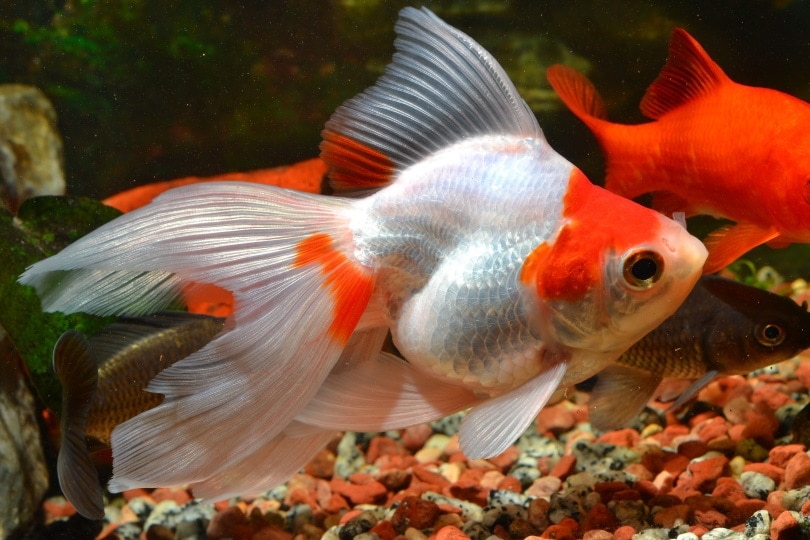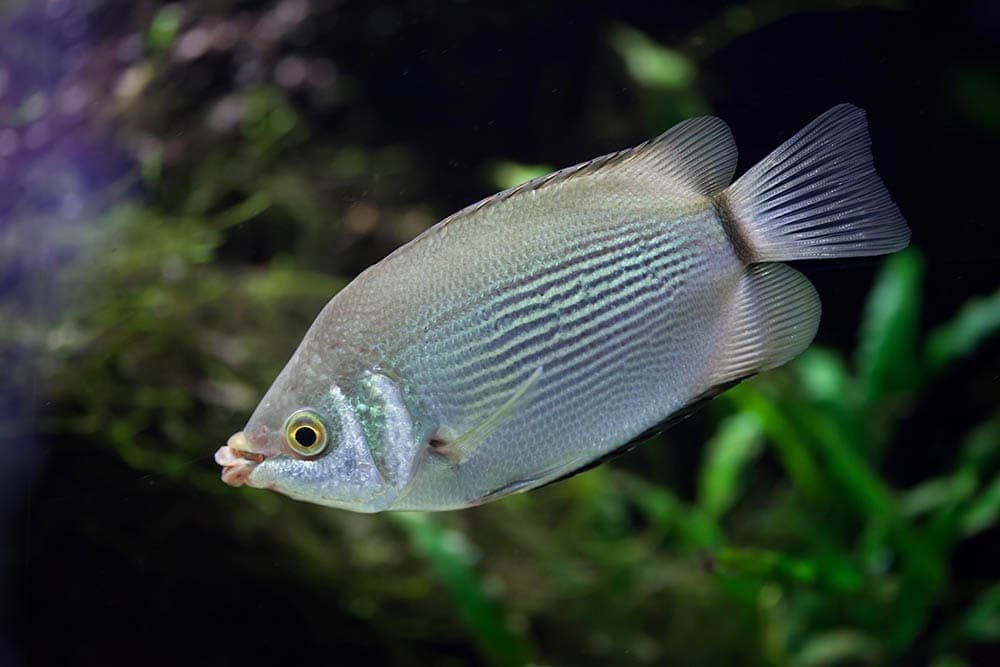3 Great Tank Mates for Peacock Cichlids (With Pitures)

Updated on
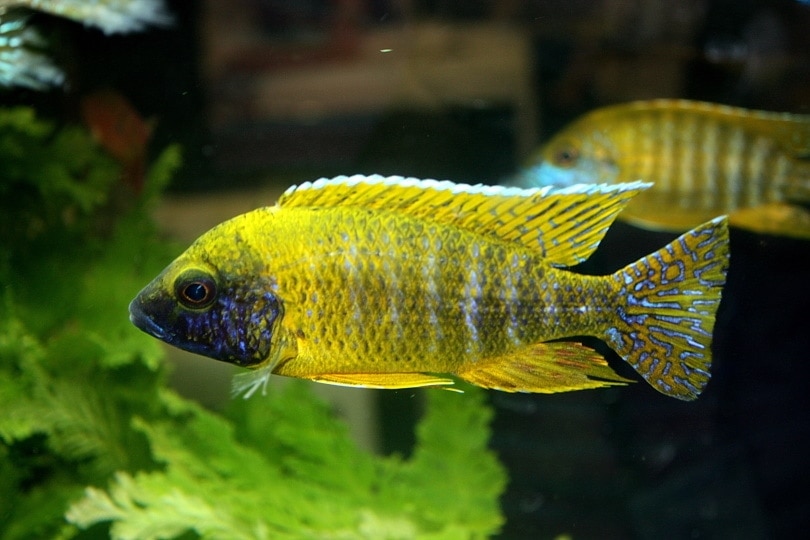
Click to Skip Ahead
Peacock Cichlids are one of the most colorful cichlids. These freshwater fish come in vibrant colors from blue, red, orange, purple, and yellow. Their stunning colors have made them very popular among aquarists.
For a cichlid, they are relatively mellow and low-maintenance. They are also the friendliest and most peaceful cichlids you can keep in your aquarium. Native to Malawi, this species is found in Lake Malawi, and there are at least 22 different species of the Peacock Cichlid.
Most Cichlids have a reputation for being aggressive; however, the Peacock Cichlid is fairly peaceful. Males can be territorial sometimes; therefore, it’s best to provide them with sufficient space to avoid issues.
In this article, we will look at the compatible tank mates for the Peacock Cichlid.
The 3 Tank Mates for Peacock Cichlids
When choosing a tankmate for your Peacock Cichlid, compatibility should be the main determinant. Although they are a peaceful breed, it doesn’t mean they’ll get along with all the fish species. As a tame member of the cichlid family, this fish will get along with other non-aggressive tank mates.
Here are some of them.
1. Botia Loaches (Botia Dario)

| Size | 4.5 inches |
| Diet | Omnivore |
| Minimum Tank Size | 30 gallons |
| Care Level | Moderate |
| Temperament | Semi-aggressive |
The Botia Loach would get along with the Peacock Cichlid in the same tank. They are semi-aggressive and, therefore, wouldn’t get into fights with the Cichlid. Like the Cichlid, they also like to hide; therefore, if you keep both of them, ensure there are enough rocks and caves for both of them to hide.
They are also bottom feeders, just like the Peacock Cichlids. Therefore, if you don’t get enough space for both of them, they’ll start competing and become aggressive toward each other.
2. Pleco (Ancistrus Cirrhosus)
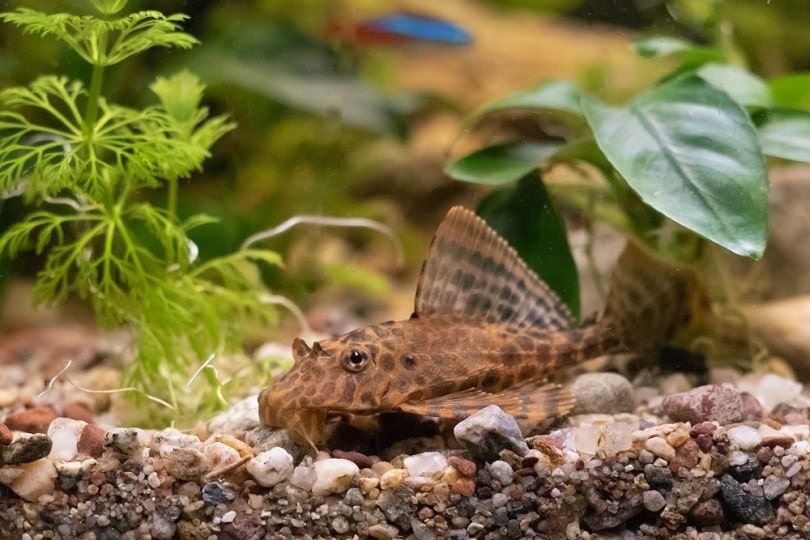
| Size | 3–5 inches |
| Diet | Omnivore |
| Minimum Tank Size | 20–30 gallons |
| Care Level | Easy |
| Temperament | Peaceful |
Plecos are compatible with Peacock Cichlids because they are also very peaceful. They spend most of their time in the bottom of the aquarium feeding on the algae; hence will hardly bother other tank mates.
If you want to spend less time cleaning your tank, get some Plecos. The Peacock Cichlids can freely roam in the tank without fighting for space because they stick to the bottom of the tank. Also, because of their temperament and behavior, they can survive together in a community fish tank.
3. Red Tail Shark (Epalzeorhynchos Bicolor)
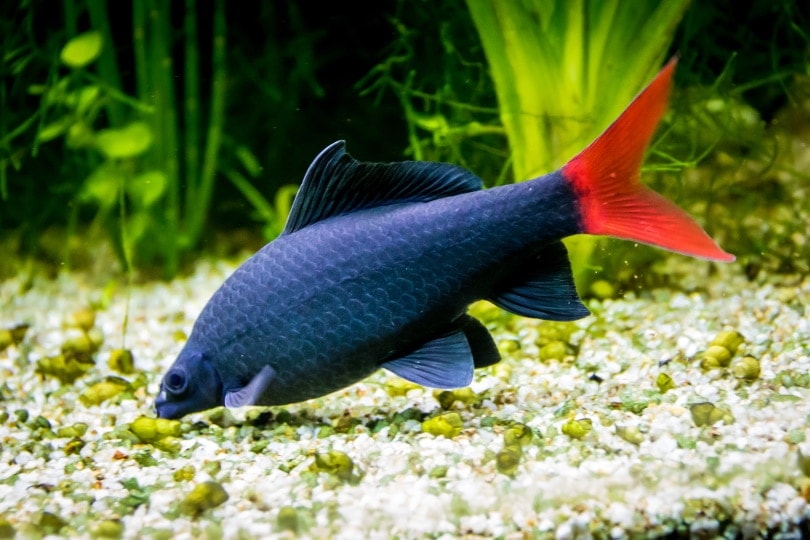
| Size | 5–6 inches |
| Diet | Omnivore |
| Minimum Tank Size | 50 gallons |
| Care Level | Moderate |
| Temperament | Semi-aggressive |
The Red Tail Shark is one of the most common freshwater pets found in the aquarium. They are active and swim at the bottom of the tank. Since they are semi-aggressive, they become triggered by insufficient tank size and the wrong tank mates.
They can comfortably live in a community aquarium if the tank mates are peaceful, like the Peacock Cichlid. With this pairing, you are less likely to see aggressive behavior.
What Makes a Good Tank Mate for Peacock Cichlid?
Before you put your Peacock Cichlid with other tank mates, you should consider the following factors.
1. The Temperament
Peacock Cichlids are very peaceful fish species. Therefore, when adding tank mates, you should consider how aggressive or calm they are. Aggressive species, even from the Cichlids family, are more likely to attack your pets in the fish tank.
2. The Behaviour
These fish breeds love hiding in caves and stones. Males are very territorial; therefore, they require this space to hide without feeling crowded. When choosing a tank mate, they have to be comfortable in their own area without competing with the Peacock Cichlids.
If the other tank mate is also territorial of hiding spaces, the fish will not get along.

3. The Tank Parameters
When keeping two different types of fish breeds in one community aquarium, it’s better when they both require the same water parameters, food, and tank size. This makes it easier to manage different breeds without having to get an extra tank.
4. The Size of the Fish
Larger fish breeds are ultimately scary to smaller species. Placing your Cichlids together with bigger fish will create room for attacks and aggressiveness. This will also push them to hide in the caves more.
Where Do Peacock Cichlids Prefer to Live in the Aquarium?
Peacock Cichlids are mid to bottom-dwelling fish. In the wild, they live at the bottom of Lake Malawi.
When you add them to an aquarium, they behave the same and will sift through the substrate. These fish breeds are active swimmers and hunters; therefore, but require some space to hide at the bottom.
When adding tank mates, ensure they are not competing for the same space; otherwise, they’ll become aggressive.
Water Parameters
Peacock Cichlids are native to Lake Malawi in East Africa. There are over twenty types of Peacock Chiclids in this lake.
The areas that these fish breeds inhabit are characterized by sandy and rocky areas. Therefore, you should ensure that the aquarium has similar conditions for your Cichlid to live well.
The lake is very consistent when it comes to water parameters and chemistry. Aquarium keepers should maintain the temperature, pH levels, and hardness as consistently as possible.
The water temperature should be at 74°F to 82°F (24°–28°C). However, it would be best if you aimed for higher temperatures.
The pH levels should range between 7.5 and 8.5 and a water hardness of 4 to 6 pH. To ensure that the pH levels are maintained, you can use a litmus test to check and monitor. As long as your fish is living in appropriate conditions, they will live for longer.
Size
Peacock Cichlids aren’t very large. The males grow to about 6 inches (15 centimeters) long, whereas the females grow to around 4 inches (10 cm). However, despite their small size, they need a lot of space to swim.
Therefore, you should provide a tank that’s at least 55 gallons (208 L). This size will give them enough space to swim around, just like in the wild. However, if you are keeping a bigger group of about 10, you should increase the tank size to approximately 100 gallons.
Aggressive Behaviors
Compared to other Cichlid fish species, Peacock Cichlids are pretty peaceful and calm. They rarely attack other tank mates but can be very territorial. Since they love hiding in the caves, you should create lots of hiding spaces in the aquarium to make it more comfortable for them.
If you have other tank mates, the hiding caves reduce territorial aggressiveness. Males tend to be more aggressive than females; therefore, you should carefully consider this factor when adding new tank mates.
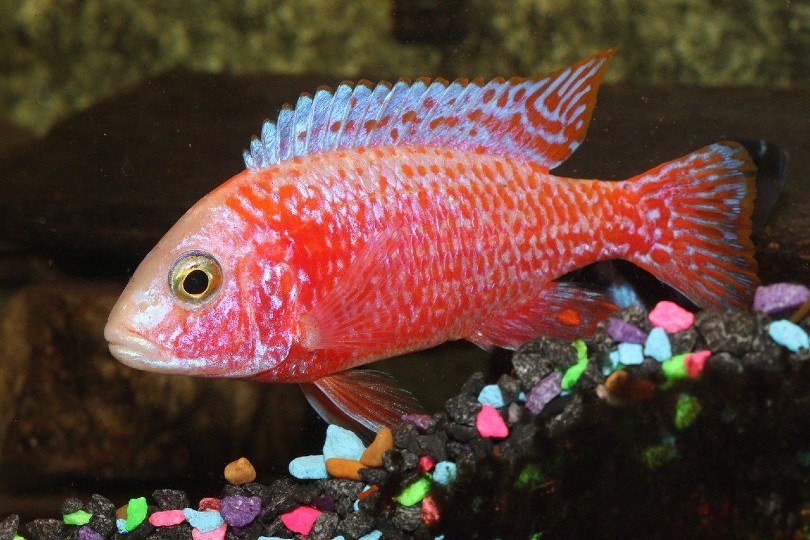
The 3 Benefits of Having Tank Mates for Peacock Cichlid in Your Aquarium
Keeping your Peacock Cichlids with other tank mates comes with the following benefits.
1. You Can Easily Breed Them
Peacock Cichlids get along with their fellow breeds. Therefore, you can keep them together for breeding purposes.
When doing this, it’s best to keep in mind that male Peacocks are territorial and tend to be solitary. Therefore, you have to ensure that every male has their own territory to avoid conflict during breeding.
2. You Can Build a Community Aquarium
Aquariums are stress relievers. Having one in your office or home with several colorful fish species is such a calming experience. Adding different breeds brings out a beautiful aesthetic.
3. They Have Companionship
Your Peacock Cichlids with other tank mates provide companionship. A school of fish will coexist peacefully as long as there are no aggressive breeds.
Peacock Cichlids are also active hunters and enjoy swimming. The presence of other tank mates keeps them engaged as they swim in the aquarium.
What Type of Food Should You Feed Your Peacock Cichlid?
These fish breeds are omnivores that will appreciate feeding on a variety of foods. They were born predators; therefore, they enjoy diving deep into the water and eating invertebrates such as insects and crustaceans.
A quality diet should include pellets that sink to the bottom of the fish tank. It would be best to also supplement the diet with vegetables, meat, insects, water fleas, bloodworms, frozen or live shrimp, and daphnia.
In addition, you can add flakes if your fish prefers to eat them. Protect your pet fish from bloating by removing mammalian meat from the diet.
To avoid overfeeding your Peacock Cichlid, ensure you split the meals into small meals throughout the day. This way, you’ll prevent obesity and maintain stable water parameters.
When there’s a lot of uneaten food in the fish tank, the toxic levels and ammonia will increase once the food starts rotting. A spike in these elements is fatal to your Peacock Cichlid.
In addition, the owner should break down the pellets and all types of food into smaller pieces. When they are smaller, the fish can feed on them much faster. After 2-3 minutes, you should remove the leftovers to prevent a spike in toxicity levels.
Summary
Peacock Cichlids are an excellent choice for your community aquarium. They are a peaceful and calm species that gets along with other non-aggressive species. The vibrant colors and laid-back temperament of this breed make it an excellent choice for any aquarists looking for an addition to their community fish tank.
These fish species love living in the mid to bottom part of the aquarium. Although they are not aggressive, they can be territorial, especially males. Because of this, you should add tank mates that are not competing for the same spaces.
If it’s your first time keeping these fish breeds, ensure you add enough caves and hiding spaces. When growing up in the wild, they love hiding in the bottom surfaces; therefore, you should mimic these conditions in your aquarium to keep your pet fish happy and healthy.
See Also:
Featured Image Credit: Arunee Rodloy, Shutterstock


